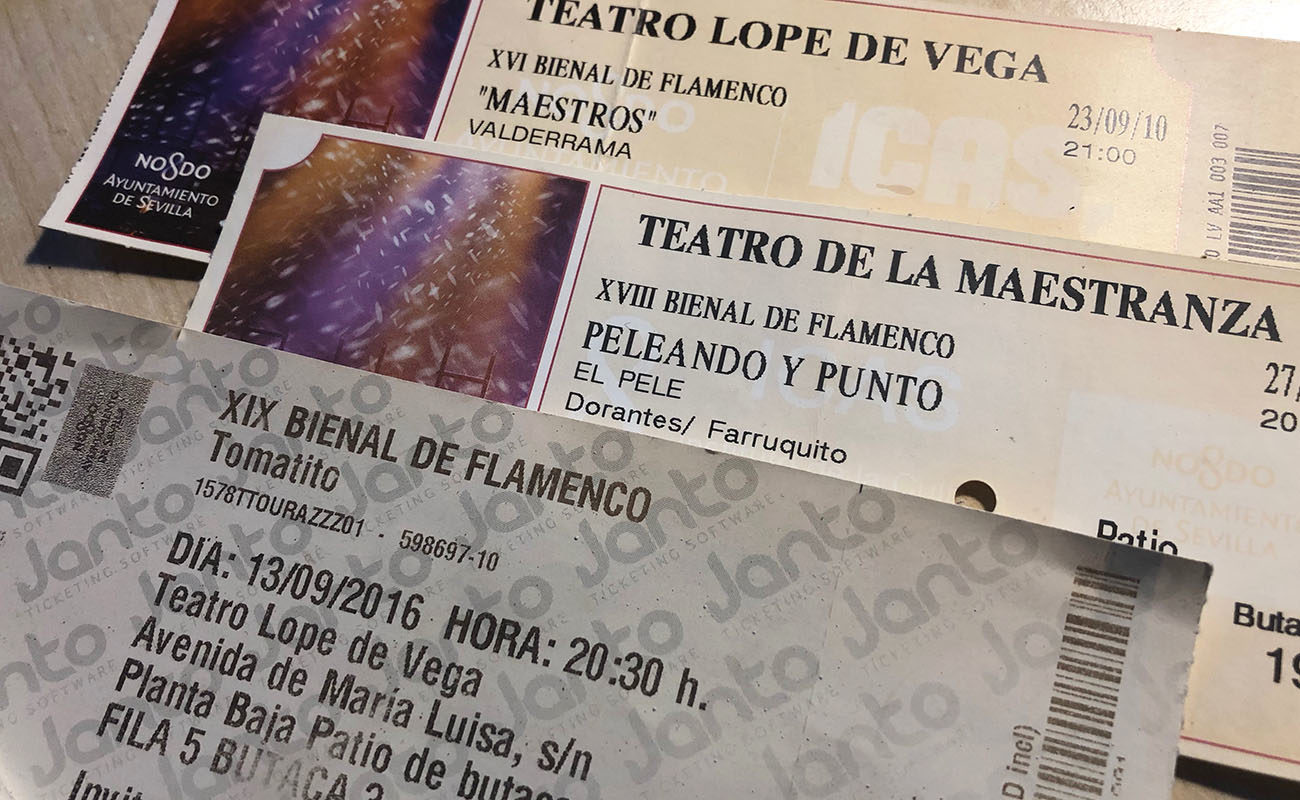Culture of the people: putting up a show
Flamenco is a fundamental part of Andalusian culture which, like the writer and cantaor Luis Caballero once said, is more than just wine and song. I would add: it’s more than just filling up venues.

In the last few years, I’ve been amazed at how expensive the flamenco events’ tickets in Seville have become, especially for the Bienal, and for this new festival, Septiembre es Flamenco, also known as Bienalita(as basically it’s the same thing). I’ve been amazed not just because we’re going through a brutal recession, what must be taken in account, but because flamenco is culture, and the high prices prevent many to access this culture. Especially the young people in Seville’s poorest neighbourhoods, suffering the scourge of unemployment, who only seem to matter at the time of elections. In this new festival of Seville, intended for the years with no Bienal, we miss many things, and one of them is the promotion of young talent, instead of almost always inviting those artists with commercial pull. In the towns of the province of Seville, there are many good cantaoresworthy of performing in this kind of festivals who would attract public, some more than others. I mean towns such as Lebrija, Utrera, Mairena, la Puebla de Cazalla or Los Palacios, to name a few. It’s easy to sit down and design a poster filed with well-known names, although in some cases those posters are made by the artists’ representatives and not by the festival directors, as it happens at the Bienal. One thing is to manage a flamenco festival, but another quite different is to program it, creating with brains and knowledge, opening proposals and knowing what has to happen at every moment. That, among many other things, is to direct a festival. Yet, as long as there is enough public paying 25 euros per head to fill venues for one and a half hour of entertainment, nothing will change.
That is the cultural policy of Seville’s town hall, regardless of the party in charge. A city, cradle of flamenco, where traditional peñasin Macarena or in Triana are closed, where there isn’t a good archive centre for researchers or aficionados. I have said that the people of Seville, a city so important for the arte jondo, don’t know the history of flamenco, and I say it again. Most people in Seville don’t really know who were Silverio, Campanera or Maestro Pérez. They don’t know how everything started, or which artists where the key players in the creation of what we now call flamenco, or which entrepreneurs contributed to make the capital of Andalusia the most flamencacity in the world from the XIX century on. Our politicians wrap themselves in culture when they talk about flamenco, but they don’t promote its research, and they think that by organizing the Bienal (to give one example), they’ve already done their duty. A festival inaccessible to many young people because of the abusive ticket pricing, or because they’re unable to buy tickets on-line, and when they come to the venues everything has been sold out to outsiders, who are truly the program’s target market. Then, because the tickets are sold out for most events, the organizers pat themselves in the back, as if they were showbiz impresarios instead of representatives elected by the people to manage culture, among other things. Flamenco is a fundamental part of Andalusian culture (and of Seville’s culture in this particular case) which, like the writer and cantaor Luis Caballero once said, is more than just wine and song. I would add: it’s more than just filling up venues.






